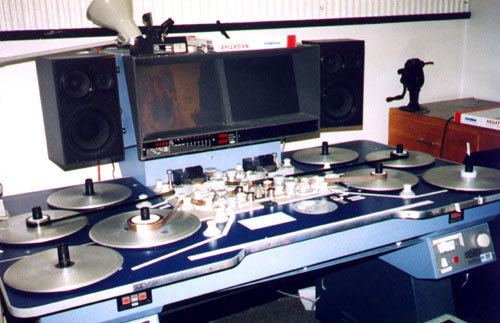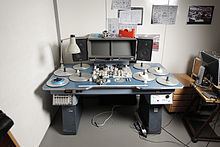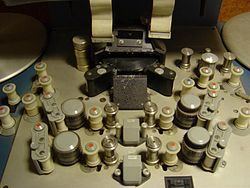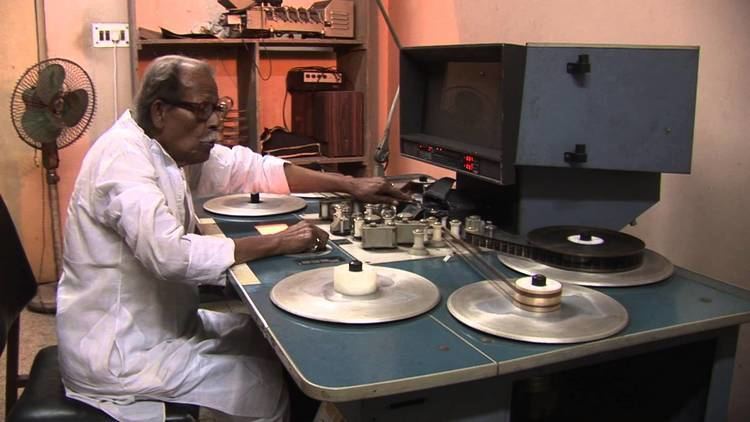 | ||
How to cut film on a steenbeck
Steenbeck is a brand name that has become synonymous with a type of flatbed film editing suite which is usable with both 16 mm and 35 mm optical sound and magnetic sound film.
Contents
- How to cut film on a steenbeck
- Arabinda bhattacharya editor demonstrating the steenbeck machine at rupayan
- References

The Steenbeck company was founded in 1931 by Wilhelm Steenbeck in Hamburg, Germany. Since then, the name Steenbeck has become widely known in the film editing community and more than 25,000 machines are in operation around the world. The company relocated to Venray (The Netherlands) in September 2003, where it still manufactures editing tables.

Despite the move away from physical film stock – much editing is now based on digital media – devices such as the Lightworks non-linear film editing controller and archives still use the Steenbeck physical layout for controlling the process. The Steenbeck's lower light levels and controllable speed make it a preferred piece of equipment for film archives (such as the Library Of Congress' motion picture collection) and restoration facilities as prints can be quickly and easily inspected with less risk of damage compared to a movie projector. Because there is no intermittent movement, the image is created through a rotating prism which scans the frames. Steenbeck machines were known to be exceptionally easy on film stock, due to their use of soft-edged nylon rollers.

Arabinda bhattacharya editor demonstrating the steenbeck machine at rupayan



